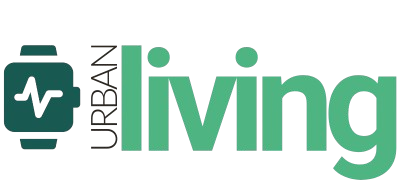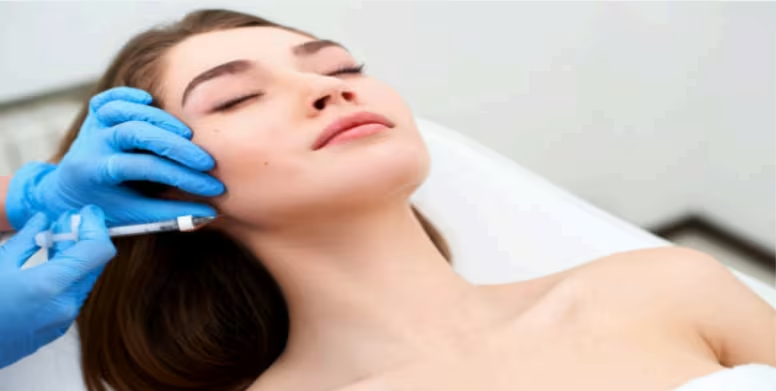Cheek fillers have become increasingly popular in Singapore as a non-surgical cosmetic
procedure for those looking to enhance facial features and achieve a more youthful appearance.
This cosmetic treatment effectively addresses volume loss in the mid-face area, defines cheekbones, and creates facial harmony without requiring invasive surgery.
With more than 3 million people opting for dermal fillers annually worldwide, this treatment offers a relatively quick solution with minimal downtime compared to surgical alternatives.
Read more: The Ultimate Guide to Chin Fillers in Singapore
This comprehensive guide will walk you through everything you need to know about
cheek fillers in Singapore, from understanding what they are and their benefits to finding the right provider and managing expectations about results.
What Are Cheek Fillers?
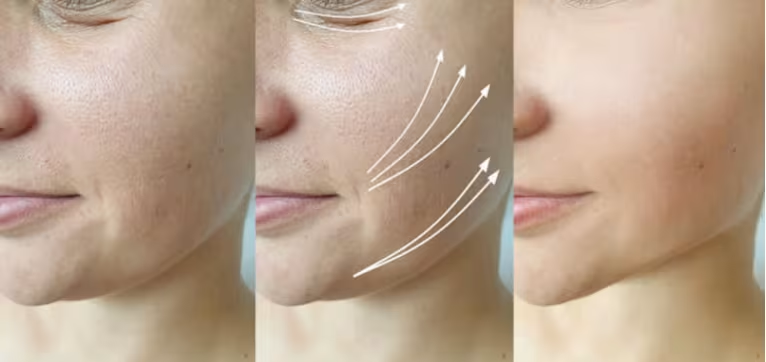
Cheek fillers are injectable dermal fillers specifically designed to enhance the midface
area. These injections add volume to areas above and around your cheekbones, creating the illusion of more defined bone structure while also smoothing out wrinkles and fine lines.
The procedure involves injecting safe substances beneath the skin layer to restore lost volume or enhance facial contours.
Unlike surgical procedures that involve lengthy recovery times, cheek fillers offer a quick, non-invasive alternative that can be completed within 15-30 minutes depending on the extent of treatment needed.
Types of Cheek Fillers Available in Singapore
Several types of dermal fillers are used for cheek augmentation in Singapore, each with
unique properties and benefits:
Hyaluronic Acid (HA) Fillers
HA fillers are the most common type used for cheek enhancement. Hyaluronic acid is a naturally occurring substance in your skin that helps retain moisture and add volume.
As we age, our skin loses HA levels, leading to wrinkles and volume loss. Popular HA filler brands in Singapore include:
- JUVÉDERM®: Particularly JUVÉDERM® Voluma, often considered the “gold
standard” for cheek enhancement due to its thick, viscous formula that mimics
bone-like structure - Restylane®: Includes Restylane® Contour (designed specifically for cheek
augmentation and midface contouring) and Restylane® Lyft (targets mild sagging
skin and definition loss) - RHA® Fillers: Designed to work with facial movements for a more natural look,
making them the only FDA-approved fillers for dynamic wrinkles
Results from HA fillers typically last about 9-12 months, though JUVÉDERM® Voluma can last up to 18 months.
Calcium Hydroxylapatite (CaHA)
CaHA is a naturally occurring substance found in bones. Brands like Radiesse® use CaHA to add fullness to cheekbones and smooth deeper lines and wrinkles. Results from CaHA fillers usually last around 15 months.
Poly-L-lactic Acid (PLLA)
PLLA fillers like Sculptra® are synthetic substances that stimulate your body’s natural collagen production. Rather than simply adding volume, these fillers work over time to improve skin structure.
Results from PLLA fillers can last up to two years or more but may require multiple sessions to achieve desired results.
Polymethylmethacrylate (PMMA)
PMMA fillers (such as Bellafill®) use tiny collagen beads to provide firmness and structure to the cheeks. Results can last for years, though multiple injection sessions
may be required.
Who Can Benefit from Cheek Fillers?
Cheek fillers are versatile treatments that can address various aesthetic concerns:
Ideal Candidates
- Individuals with age-related volume loss in the midface
- Those with naturally flat or undefined cheekbones seeking enhanced facial
structure - People looking to correct facial asymmetry
- Those wanting to smooth marionette lines and nasolabial folds
- Individuals seeking a more youthful appearance without surgery
- Healthy non-smokers without chronic health conditions
When Cheek Fillers May Not Be Suitable
You may not be a good candidate for cheek fillers if you:
- Are pregnant or breastfeeding
- Have bleeding disorders like hemophilia or thalassemi
- Have allergies to synthetic compounds used in fillers
- Have certain autoimmune conditions
- Have active skin infections or certain skin diseases
- Have had recent vaccinations that may cause swelling
- Have severe hollowing or significant skin sagging that would be better addressed
with surgical procedures
Benefits of Cheek Fillers
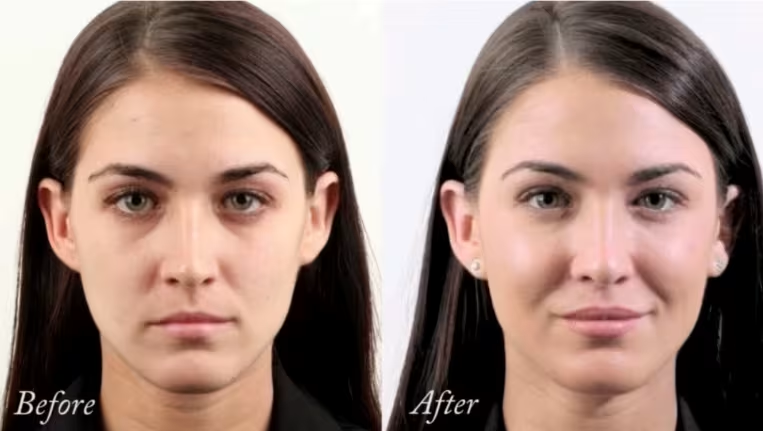
Compared to surgical options like cheek implants or facelifts, cheek fillers offer several
advantages:
- Quick procedure with minimal downtime – most patients can return to regular
activities immediately - Immediate or near-immediate results – visible changes right after treatment
- Non-permanent results – allowing adjustments if preferences change
- Low risk of serious complications – making it a safer alternative to surgery
- Customizable outcomes – fillers can be modified after insertion to achieve
desired results - Cost-effective – less expensive than invasive procedures
- Natural-looking enhancement – when performed by skilled practitioners
Age-Related Volume Loss
As we age, our face naturally loses volume due to decreased collagen and elastin production.
These proteins maintain skin elasticity and firmness. Reduced levels can result in flat, sunken cheeks that create an aged, tired appearance. Cheek fillers effectively restore this lost volume, creating a more youthful, refreshed look.
Asymmetrical or Undefined Cheeks
Some people naturally have asymmetrical faces or undefined cheekbones. Strategic filler placement can add volume to create balance and definition, enhancing overall facial harmony.
Read more: Dermal Fillers vs Thread Lifts in Singapore: Cost and Comparison
Laugh Lines and Nasolabial Folds
Fillers placed in the cheek area can help lift sagging skin, which indirectly reduces the appearance of laugh lines and nasolabial folds (the lines running from the sides of the nose to the corners of the mouth).
Read more: Botox vs Dermal Fillers: Which is Better? (Updated)
Dark Undereye Shadows
Many dark undereye circles result from volume loss at what doctors call the “lid-cheek junction.” Targeted filler placement in this area can significantly reduce shadows and create a more rested appearance.
Facial Contouring
Similar to makeup contouring techniques, strategically placed fillers can highlight specific areas of the face, creating the appearance of more defined cheekbones without the need for daily makeup application.
Read more: Complete Guide to Ellansé Dermal Fillers
The Cheek Filler Procedure in Singapore
Pre-Treatment Consultation
Before getting cheek fillers in Singapore, you’ll have a consultation with your provider. During this important meeting:
- Your provider will examine your face and discuss your aesthetic goals
You’ll need to disclose your complete medical history, including:
- Any allergies
- Autoimmune conditions
- Skin conditions
- Medications and supplements you’re taking
- Previous cosmetic procedures
- Smoking habits
- History of transplants or vaccinations
This information helps your provider determine if you’re a suitable candidate and which filler would work best for you.
Preparation for Treatment
In the two weeks leading up to your appointment:
- Avoid blood-thinning medications like aspirin and NSAIDs
- If you’re on prescription blood thinners, inform your provider for specific guidance
- Consider taking Arnica or Bromelain supplements before the procedure to reduce bruising
- Schedule your appointment at a time when potential bruising wouldn’t interfere with important events
During the Procedure
The actual cheek filler procedure typically includes:
- Cleaning of the skin at the injection sites
- Application of topical anesthetic or ice to numb the area (some fillers already contain numbing agents)
- Injection of small amounts of filler beneath the skin using a thin needle 4. Possible application of cool packs immediately after injections to reduce swelling 5. A brief observation period to ensure no immediate adverse reactions
Read more: Lip Fillers Singapore: Costs, Benefits, Risks
The entire process usually takes about 15-30 minutes, depending on the extent of treatment.
Post-Treatment Care
After receiving cheek fillers, you should:
- Avoid touching the treated areas for several hours
- Sleep on your back for the first few nights to avoid disrupting the filler placement
- Avoid strenuous exercise for 24-48 hours
- Stay out of direct sunlight for several days
- Avoid applying makeup or lotions for several hours after treatment
- Quit smoking, if applicable, as it can impair healing and shorten the duration of results
Results and Longevity
With most types of cheek fillers, you’ll see some results immediately after the procedure.
However, it can take several days for any swelling to subside and for the filler to settle into its final position. Full results are typically visible within 1-2 weeks after treatment.
The longevity of cheek fillers varies depending on:
- The type of filler used
- Your metabolism
- Your lifestyle habits (smoking, drinking, exercise level)
- The area treated
- The skill of your injector
Average duration of results for different fillers:
- Hyaluronic acid fillers: 9-12 months
- JUVÉDERM® Voluma: 12-18 months
- Restylane® Contour: 6-12 months
- Restylane® Lyft: 9-15 months
- Calcium hydroxylapatite (Radiesse®): Around 15 months
- Poly-L-lactic acid (Sculptra®): Up to 2 years
- Polymethylmethacrylate (Bellafill®): Several years
Potential Risks and Side Effects
While cheek fillers are generally considered safe when administered by qualified practitioners, there are potential risks and side effects to be aware of:
Common Side Effects
Most patients experience mild side effects that resolve within a few days:
- Swelling and tenderness at injection sites
- Bruising
- Redness
- Itching
- Mild discomfort
Less Common Complications
- Asymmetrical appearance
- Lumps or nodules
- Filler migration to other facial areas
- Allergic reactions
- Infections
- Filler leakage
- Skin damage or scarring
Rare but Serious Complications
Though extremely rare, serious complications can occur, particularly when fillers are administered by inexperienced providers:
- Vascular occlusion (filler accidentally injected into blood vessels)
- Tissue death due to circulation blockage
- Vision problems
- Severe swelling
These risks highlight the importance of choosing a qualified, experienced provider for your cheek filler treatment in Singapore.
Cost of Cheek Fillers in Singapore
The cost of cheek fillers in Singapore varies depending on several factors:
- Type of filler used
- Number of syringes required
- Provider’s experience and qualifications
- Clinic location and reputation
On average, expect to pay approximately:
- Hyaluronic acid fillers: SGD $650-1,000 per syringe
- Premium fillers like JUVÉDERM® Voluma: SGD $1,000-1,500 per syringe ● Longer-lasting fillers like Sculptra®: SGD $900-1,200 per syringe
Most first-time patients require 1-2 syringes for noticeable cheek enhancement. However, with repeated treatments over time, the interval between touch-ups often extends, potentially reducing long-term costs.
It’s important to note that cheek fillers are considered elective cosmetic procedures and therefore are not covered by health insurance in Singapore.
Choosing the Right Provider in Singapore
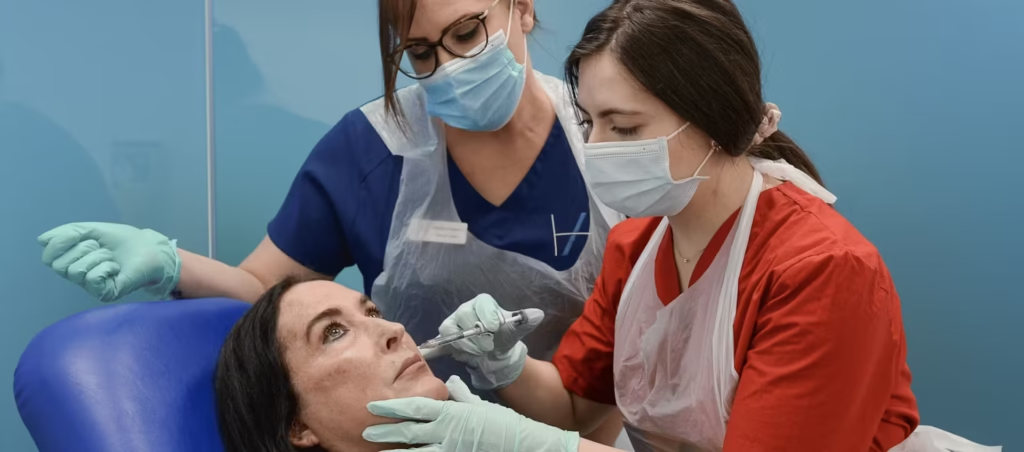
Finding a qualified provider is crucial for safe and satisfactory cheek filler results. Here are some guidelines for selecting a provider in Singapore:
Qualifications to Look For
- Board-certified plastic surgeon or dermatologist
- Specific training in facial aesthetics and dermal fillers
- Experience with different types of fillers and techniques
- Portfolio of before-and-after photos
- Positive patient reviews
Questions to Ask During Consultation
- What type of filler do you recommend for my concerns and why?
- How many procedures like this have you performed?
- What should I expect in terms of results and longevity?
- What are the potential risks specific to my case?
- What should I do if I’m not satisfied with the results?
- What is your approach if complications arise?
Warning Signs
Be cautious of providers who:
- Offer unusually low prices (which may indicate diluted products or lack of experience)
- Cannot provide before-and-after examples of their work
- Pressure you into getting more treatments than you want
- Don’t take a detailed medical history
- Don’t discuss potential risks and complications
Alternatives to Cheek Fillers
If you’re considering cheek enhancement but aren’t sure if fillers are right for you, there are several alternatives available in Singapore:
Non-Surgical Alternatives
- Thread lifts: Temporary sutures visibly lift the skin for a subtle, natural-looking enhancement
- Ultherapy: Uses ultrasound technology to stimulate collagen production
- Thermage: Uses radiofrequency energy to tighten skin
- Facial fat grafting: Uses your own fat from another part of your body to restore volume
- Makeup contouring: A non-invasive way to create the illusion of defined cheekbones
Surgical Alternatives
- Cheek implants: Silicone implants surgically placed over the cheekbones for permanent volume
- Facelift: Surgical procedure that lifts and tightens facial tissues
- Subperiosteal facelift: Focuses specifically on the midface area
Each alternative has its own set of benefits, risks, and recovery times. A consultation with a qualified aesthetic doctor or plastic surgeon can help determine which option best suits your needs and goals.
Frequently Asked Questions About Cheek Fillers in Singapore
How painful are cheek filler injections?
Most patients report minimal discomfort during cheek filler procedures. Providers typically use topical anesthetics or ice to numb the area before injection, and many modern fillers contain lidocaine, a numbing agent.
You might feel a small pinch or sting during the injection, but the process is generally well-tolerated.
Can I go back to work immediately after getting cheek fillers?
Yes, most people can return to work and normal activities immediately after getting cheek fillers.
However, you might experience some swelling or bruising, so some patients prefer to schedule their appointments toward the end of the week or before days off. Avoid strenuous exercise for 24-48 hours after the procedure.
How do I know if I’m getting the right amount of filler?
A skilled provider will analyze your facial structure and discuss your aesthetic goals to determine the appropriate amount of filler.
They should take a conservative approach, especially for first-time patients, as it’s always possible to add more filler later. Trust a provider who recommends a natural-looking enhancement rather than one who suggests excessive amounts.
Will people be able to tell I’ve had cheek fillers?
When properly administered, cheek fillers should provide a natural-looking enhancement that others may notice as a refreshed appearance rather than an obvious cosmetic procedure.
The goal is to look like a well-rested, slightly younger version of yourself, not dramatically different. Discuss your preferences for subtle versus more noticeable results with your provider.
What happens if I don’t like the results of my cheek fillers?
If you’re unhappy with the results of hyaluronic acid fillers (the most common type used), they can be dissolved using an enzyme called hyaluronidase.
This process typically takes 24-48 hours to completely reverse the effects. Other types of fillers cannot be dissolved and must naturally metabolize over time.
Can cheek fillers help with sagging jowls?
Cheek fillers can indirectly improve the appearance of early jowling by restoring volume in the midface, which provides structural support to the lower face.
However, for significant jowling, a combination approach or surgical intervention might be more appropriate. Discuss your specific concerns with your provider.
What’s the difference between cheek fillers and Botox?
Cheek fillers add volume to the face by injecting substances beneath the skin, while Botox relaxes muscles to reduce dynamic wrinkles.
They address different concerns: fillers restore lost volume and enhance structure, while Botox treats wrinkles caused by muscle movement. Many patients benefit from both treatments for comprehensive facial rejuvenation.
Are there any special considerations for Asian faces when getting cheek fillers in Singapore?
Yes, Asian faces often have different structural characteristics than Western faces, including wider cheekbones and different fat distribution.
Skilled providers in Singapore should understand these differences and tailor their approach accordingly, often using less filler and focusing on specific areas to maintain natural ethnic features while enhancing definition.
Can men get cheek fillers too?
Absolutely! Men can benefit from cheek fillers, though the approach might differ slightly to maintain masculine facial features.
Providers typically use different injection techniques and filler amounts to ensure results appear natural and gender-appropriate.
How can I minimize bruising after cheek fillers?
To minimize bruising:
- Avoid blood-thinning medications and supplements (like aspirin, NSAIDs, vitamin E, and fish oil) for 1-2 weeks before treatment
- Apply ice to the area immediately after treatment
- Take arnica or bromelain supplements before and after the procedure ● Avoid alcohol for 24-48 hours before and after treatment
- Choose an experienced injector who uses techniques that minimize trauma
What should I do if I notice unusual swelling or pain after getting cheek fillers?
Contact your provider immediately if you experience:
- Severe or prolonged swelling
- Unusual pain or tenderness
- Skin discoloration (especially white or blue areas)
- Changes in vision
- Significant asymmetry
- Signs of infection like fever or increasing redness
These could indicate rare but serious complications that require prompt medical attention.
Conclusion
Cheek fillers offer a versatile, non-surgical solution for those looking to enhance facial contours, restore lost volume, or achieve more defined cheekbones in Singapore.
With proper research, realistic expectations, and a qualified provider, this procedure can provide natural-looking results with minimal downtime.
Remember that while cheek fillers are generally safe, they’re not without risks. Take time to research providers, understand the procedure, and ask questions during your consultation.
By making informed decisions, you can enjoy the benefits of cheek fillers while minimizing potential complications.
Whether you’re looking to address age-related volume loss or simply enhance your natural features, cheek fillers can be an effective part of your beauty regimen when approached with care and proper medical guidance.
